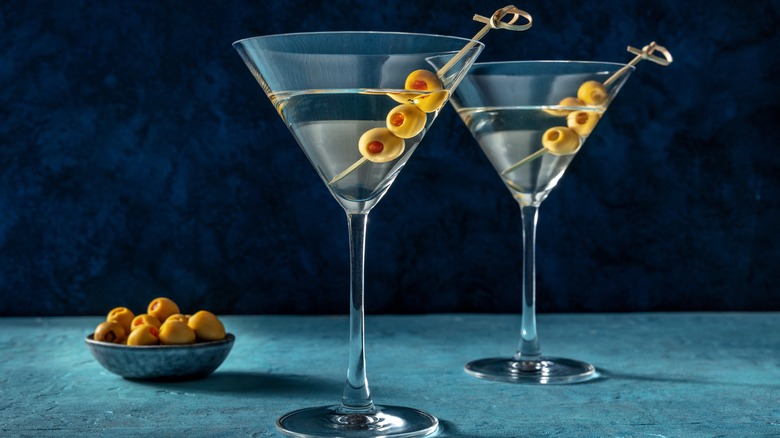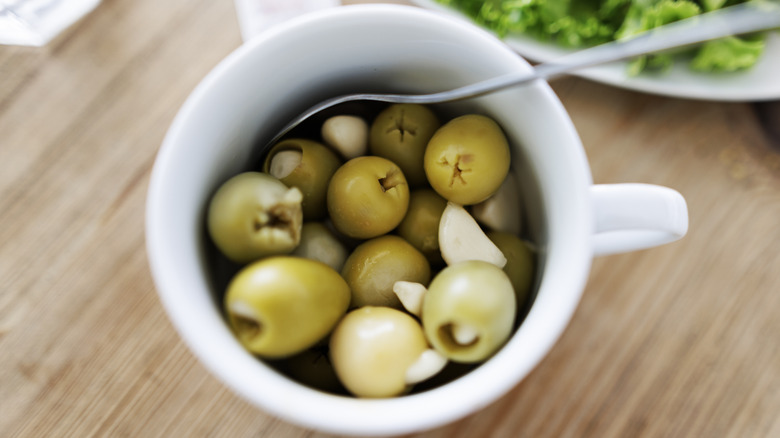Is There A Right Type Of Olive To Put In Your Martini?
Every amateur mixologist will claim that they craft their cocktail correctly when it comes to making a martini. If you're the suave and suit-clad super spy James Bond, there is only one acceptable martini to order — a Vesper martini, shaken, not stirred. In fact, though olives were first cultivated thousands of years ago, drinkers didn't chomp down on the cocktail accompaniment until the first dirty martinis started being shaken up and served by bartenders in the early 1900s. The dirty drink wouldn't experience peak popularity for decades until the 1980s and '90s.
In the century that the dirty martini has existed, an incredible amount of mental energy has been expended on debating and deciding the best olive to serve inside the cocktail, soaking up booze and secreting its salty brine. Ultimately, there is no right or wrong variety to use when you put olives in martinis, though there is a lengthy list of recommendations that cocktail enthusiasts have come up with. Every variation of the classic cocktail has a potential olive pairing, chosen by considering your martini's spirit against different olives' spices, herbs, and brine components.
Choosing your cocktail olive
There isn't any singular correct option to put in your martini. The first thing you need to consider when crafting your cocktail and determining which will work best, as you might imagine, is what your principal spirit will be. You need to consider whether another flavor will be added or if the olive alone will bring the brine to your martini.
If you opt for gin, which was the original alcohol used in making a martini, you'll want to find an olive pairing that is relatively neutral in taste so that the herbaceous nature of gin can be better showcased. Alternatively, if you used vodka, a much less flavorful spirit, you'll want to use a heavily herbed olive or even one brined in a citrus solution.
Once you've chosen which spirit you will use in your cocktail, you need to decide whether or not you'll include a measure of brine in your drink, making it a dirty martini. If you choose to create a dirty martini, it's suggested that you stick to simple olives, as an olive with a herb or citrus-infused brine will detract from the flavor of your cocktail.
Should you stuff your martini olives?
Before you choose your olive based solely on its brine, there is another type of olive that you may want to consider putting into your martini. Nowadays, ordering a martini can be akin to ordering a meal. The unassuming red nuggets of pimentos are often found in olives. However, the selection of olives that cocktail makers may use has grown significantly over the years. If you've been to a cocktail bar in recent years, you've almost certainly seen some variation of the blue cheese dirty martini on the menu.
Despite the near ubiquity of the blue cheese olive in cocktail bars around the country, many mixologists stand in firm opposition to the stuffed olive, as they feel that it packs too pungent of a punch and will only serve to obfuscate the flavor of the spirits in your martini. Nevertheless, other mixologists celebrate a stuffed olive, and some have even taken to experimenting with stuffing their own olives, creating ingredients that better complement their craft cocktails.


